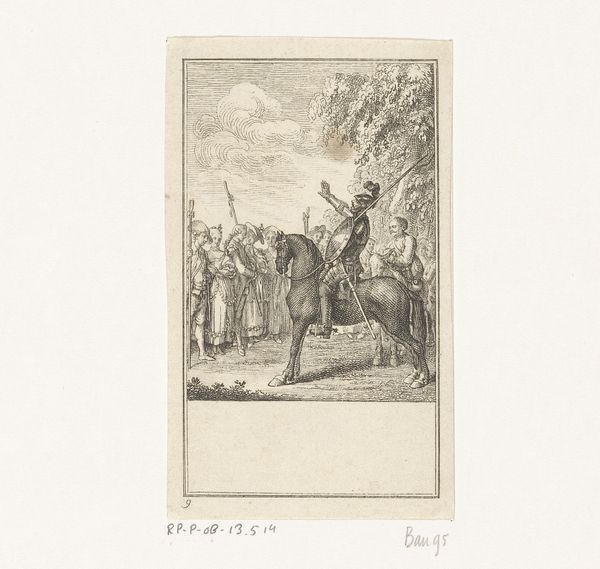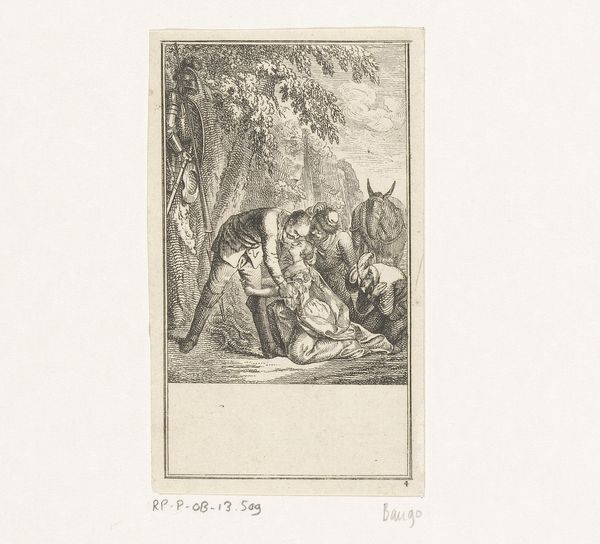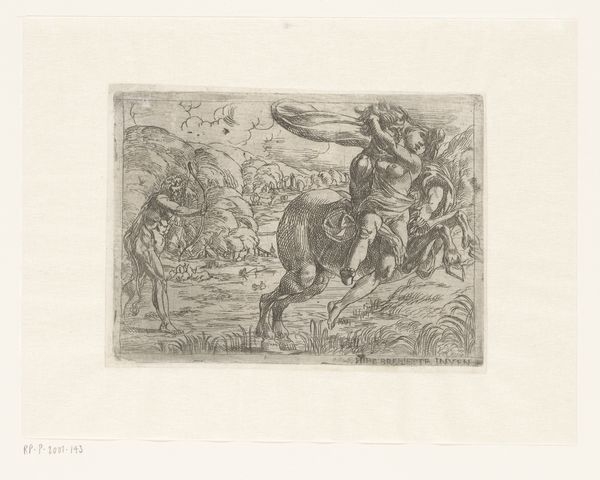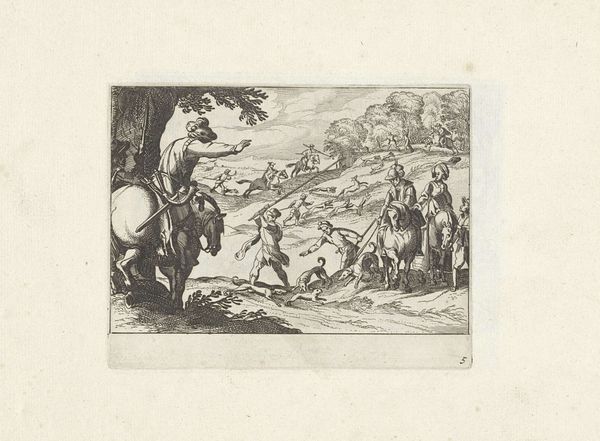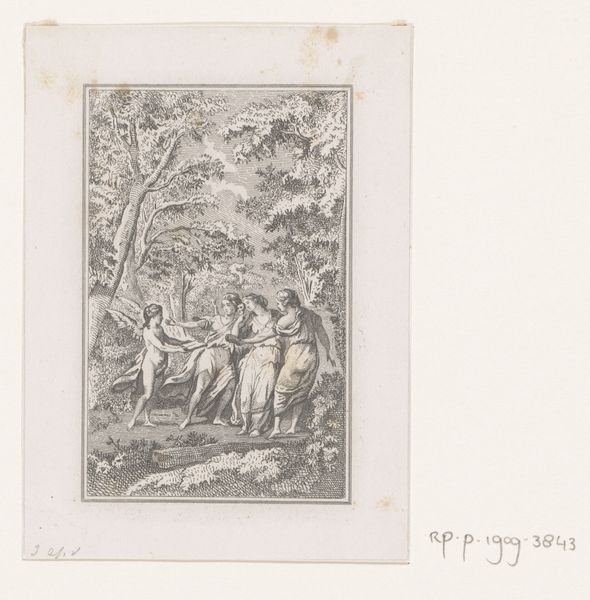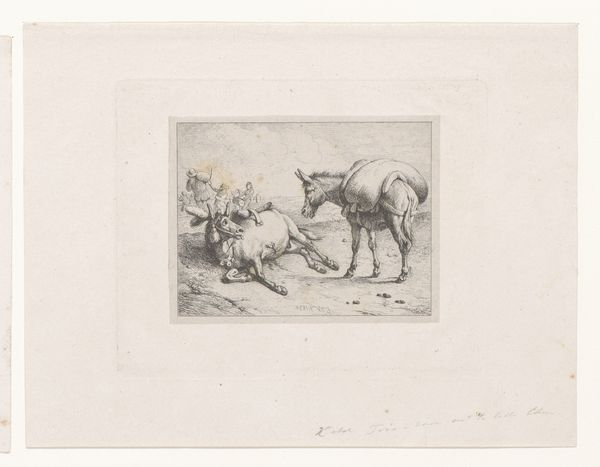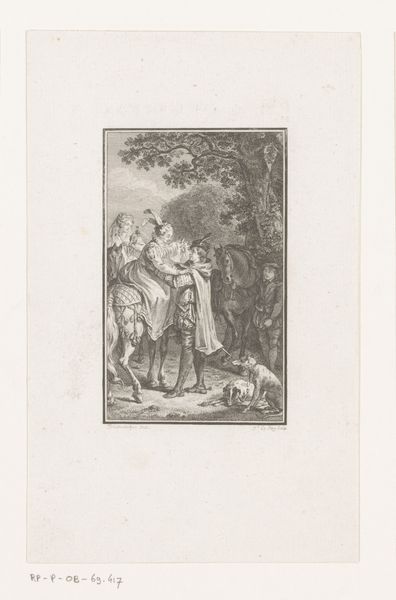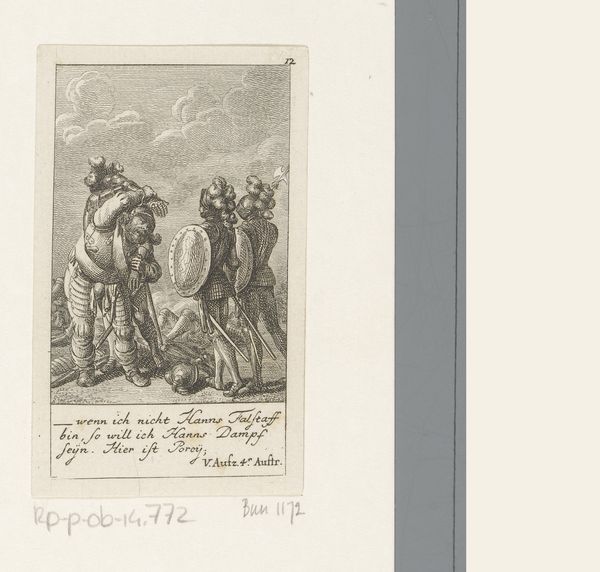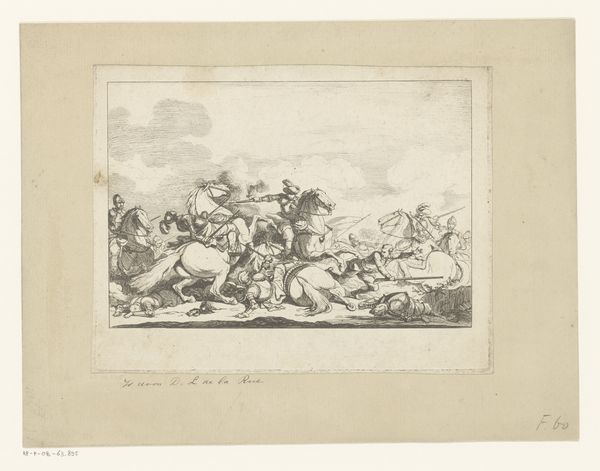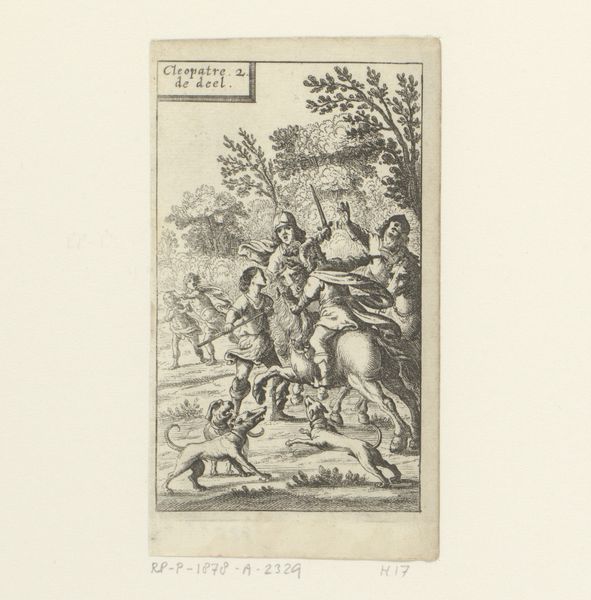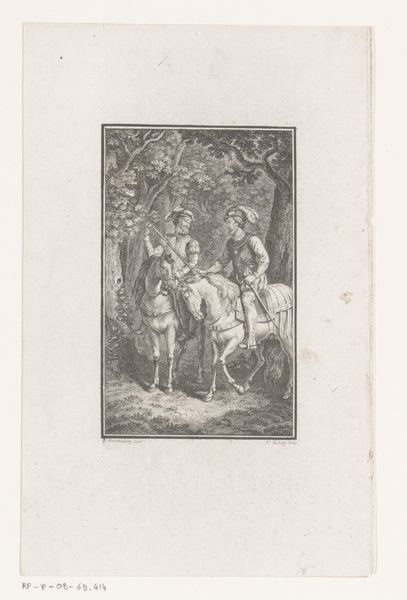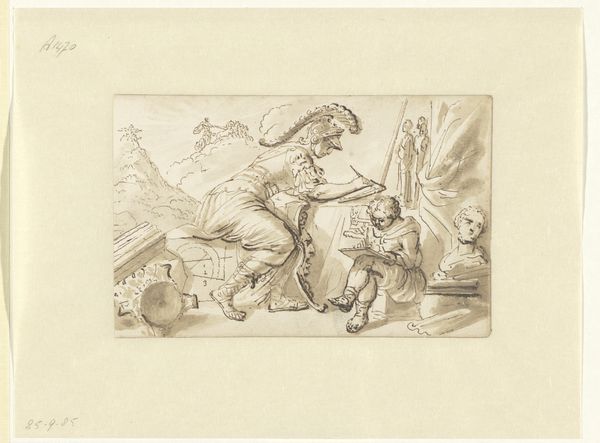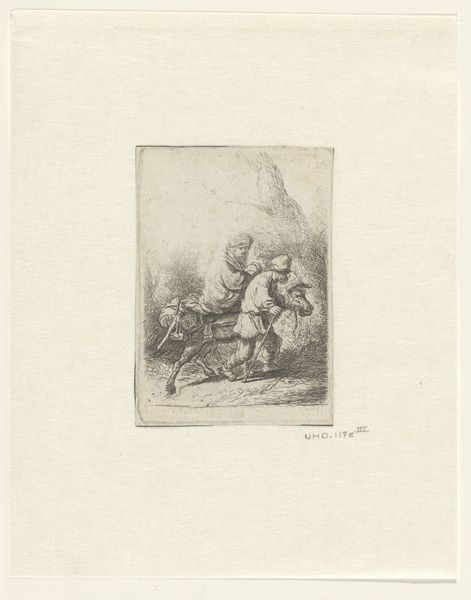
Dimensions: height 97 mm, width 55 mm
Copyright: Rijks Museum: Open Domain
Daniel Nikolaus Chodowiecki created this etching, "Don Quichot valt een kudde schapen aan," likely in the late 18th century. This piece visualizes a scene from Miguel de Cervantes' novel, Don Quixote, where the titular character, lost in his delusions of chivalry, attacks a flock of sheep, mistaking them for an army. Chodowiecki, a significant figure in the Berlin Enlightenment, used his art to engage with contemporary social and political issues. The choice to depict Don Quixote, a figure of ridicule, suggests a commentary on the irrationality and folly of clinging to outdated ideals. The detailed rendering of the chaotic scene, combined with the clear moral judgment against Don Quixote’s actions, speaks to the cultural values of the Enlightenment, which prioritized reason and social order. To truly understand the work, we need to examine the history of censorship and freedom of expression in Prussia at the time. We must turn to historical documents to shed light on the artwork’s critical engagement with social and institutional norms.
Comments
No comments
Be the first to comment and join the conversation on the ultimate creative platform.
